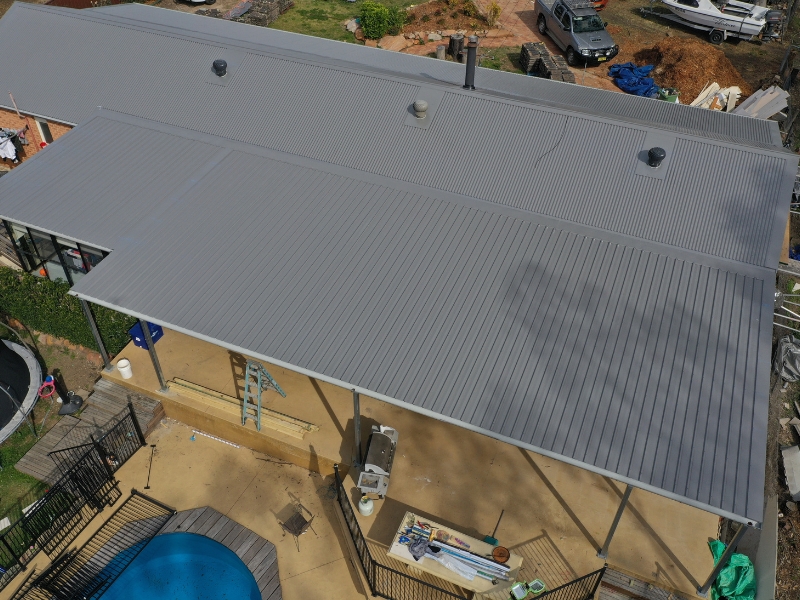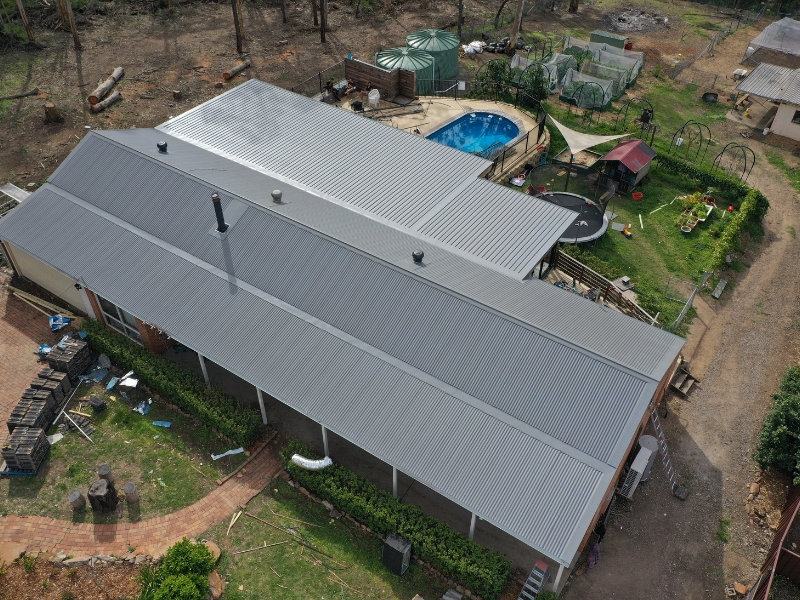Living in a house with a metal roof offers more than just aesthetic appeal. It’s a strategic choice that influences how your home performs in the long run. From durability to thermal efficiency, metal roofing carries clear advantages—but it also comes with a few challenges. Whether you’re building new or thinking of upgrading, it’s worth understanding how this roofing option stacks up in real-world conditions. A house with a metal roof can be a wise investment, provided it’s properly installed and maintained to handle the climate and wear it’ll face over decades.
What issues can arise when maintaining a metal roof?
One major problem with metal roofs is their response to extreme temperature changes. The pressure builds when fasteners loosen or panels warp due to daily expansion and contraction cycles. Common maintenance concerns include:
- Sealant breakdown at panel seams after prolonged sun exposure, leading to slow leaks or water ingress during storms.
- Rust or corrosion occurs when coatings degrade, particularly in coastal regions where salty air accelerates damage.
- Gutter backups can cause standing water and affect structural flow, especially when leaves and debris accumulate in autumn.
- Loose screws or clips which compromise wind resistance and lead to rattling, making the roof vulnerable during high gusts.
Acting early with regular checks prevents minor faults from turning into significant costs. Inspect the roof after storms or season changes and prioritise seal integrity to avoid larger issues.
Why do some homeowners hesitate to choose metal roofing?
Hesitation often stems from misconceptions. Some assume metal roofing is too noisy or doesn’t suit the style of older homes. This belief gets reinforced when they focus only on visuals or hearsay without considering product updates. Concerns usually include:
- Noise levels during rain or hail, especially if underlay or insulation isn’t installed to absorb sound.
- Rust fears, particularly without understanding modern coating tech that prevents oxidation.
- Style mismatch for traditional homes or heritage aesthetics, which may not suit specific ribbed profiles.
- Higher upfront cost compared to asphalt or concrete tile options, which can be a deal-breaker without long-term thinking.
That said, many of these worries ease once you understand more about how metal roofing reduces external noise in residential areas, especially with sound-dampening layers and insulation installed beneath the panels.
How does a house with a metal roof handle harsh climates?
Metal roofs excel in areas with extreme weather conditions, from coastal winds to inland bushfires. Where it falls short is usually down to poor planning or shortcuts during installation. Performance strengths include:
- Fire resistance is crucial in bushfire-rated zones, where ember protection is vital.
- Wind lift resistance, especially when fastened using concealed clip systems, is tested for cyclone conditions.
- Shedding of snow and debris, which limits structural load and avoids gutter overload in colder regions.
- Protective finishes that withstand UV and salt exposure, reducing the chance of colour fading or material degradation.
To optimise your home’s resilience, you can find tailored installation options for a lasting house with a metal roof that meet compliance codes and site-specific risks.
What are the cost-saving benefits of a house with a metal roof?
Sticker shock up front is common, but comparing whole-of-life costs tells a different story. The mistake many make is thinking short-term and overlooking decades of efficiency and durability. Here’s a breakdown:
Feature | Metal Roof | Tile/Shingle Roof |
Lifespan | 40–70 years | 15–30 years |
Energy efficiency | High | Moderate |
Maintenance | Low | Medium |
Fire resistance | Excellent | Variable |
Savings often come from:
- Reduced need for patchwork repairs, as the materials resist cracking and lifting over time.
- Longer intervals before complete roof replacement, with many lasting over half a century.
- Better thermal performance, lowering cooling costs in high-sun areas like inland Australia.
- Fewer call-outs, with less risk of storm damage compared to brittle tiles.
These outcomes improve further when systems are designed with airflow in mind, such as improving energy efficiency with proper roof ventilation, which can reduce roof space temperatures and extend component life.
Can a house with a metal roof improve thermal performance?
Thermal inefficiency becomes a significant problem in older homes that lack updated roofing. You’ll notice it when insulation can’t keep pace with soaring temperatures or chilly nights. Metal roofs contribute to comfort by:
- Reflecting solar heat, especially with light-coloured finishes that reduce UV absorption.
- Supporting blanket insulation, which helps maintain stable internal temperatures regardless of the season.
- Combining with vent systems, to allow trapped heat to escape rather than building up in ceiling spaces.
- Reducing reliance on AC, easing power bills during summer and extending the lifespan of air conditioning systems.
Layering materials such as foil-backed blanket insulation plays a key role in the impact of insulation on thermal comfort and energy savings, especially when combined with roof designs that support natural airflow and radiant heat control.

How do modern designs enhance a house with a metal roof?
Outdated perceptions linger, but today’s metal roofs are far from industrial-looking. Many miss out on sleek, durable, and customisable options now available across the board. Contemporary improvements include:
- Low-profile standing seam panels with smooth, clean lines that work well on minimalist builds.
- Custom colours from matte blacks to earthy neutrals, offering compatibility with brick, render, or timber finishes.
- Solar-ready designs, integrating panel brackets into the roofline to avoid lifting or damaging surface sheets.
- Profiles compatible with both ultra-modern and federation-style homes, expanding renovation options.
Design versatility is one of the key updates that homeowners often underestimate. With the right combinations, metal roofing can elevate both the form and function of your home exterior.
Does investing in quality roofing pay off in the long run?
Cutting corners on roofing leads to stress down the track. The regret hits when patch jobs stack up, costs rise, and it’s time to fully re-roof earlier than planned. Why quality pays off:
- Longer warranties on materials and installation offer peace of mind beyond quick fixes.
- Fewer callouts for repairs, reducing yearly upkeep and protecting structural integrity.
- Higher resale value, as durability and energy efficiency appeal to practical buyers.
- Eco-friendly potential, with recyclable materials and solar compatibility baked into the design.
This investment yields consistent, practical returns over time, particularly when paired with climate-adapted materials and reliable installers.
Final Thoughts
Living in a house with a metal roof isn’t just about avoiding repairs or ticking off energy goals—it’s about making a smart call that holds up under real-world pressure. You’ll want something durable, looks sharp, and won’t cost a fortune to maintain in five or ten years. Whether you’re renovating or building from scratch, make choices that pay off well beyond the build date.
Suppose you’re comparing options or unsure where to start. In that case, it’s always helpful to reach out to the team at Scott’s Metal Roofing to discuss your roofing needs.

